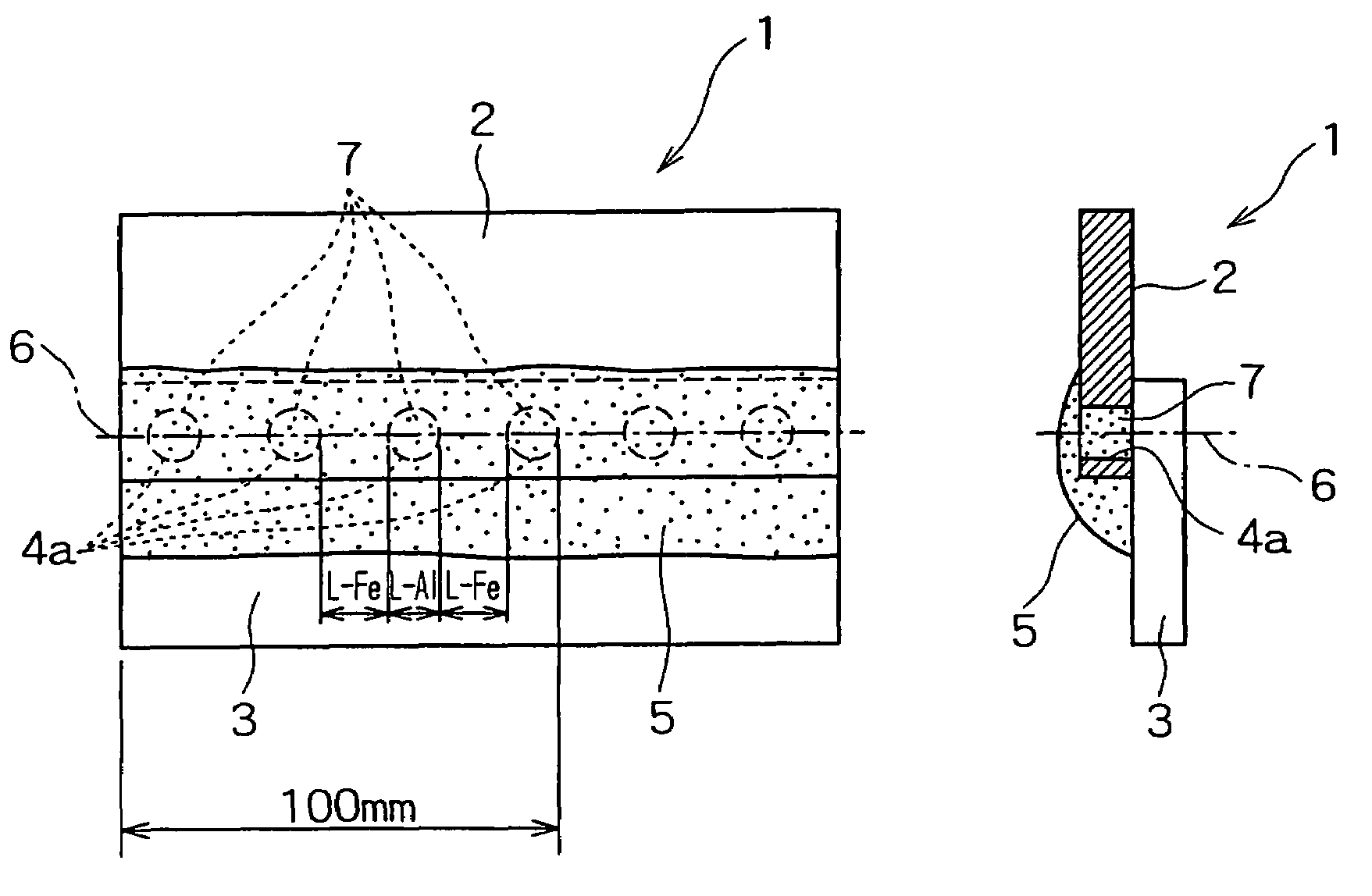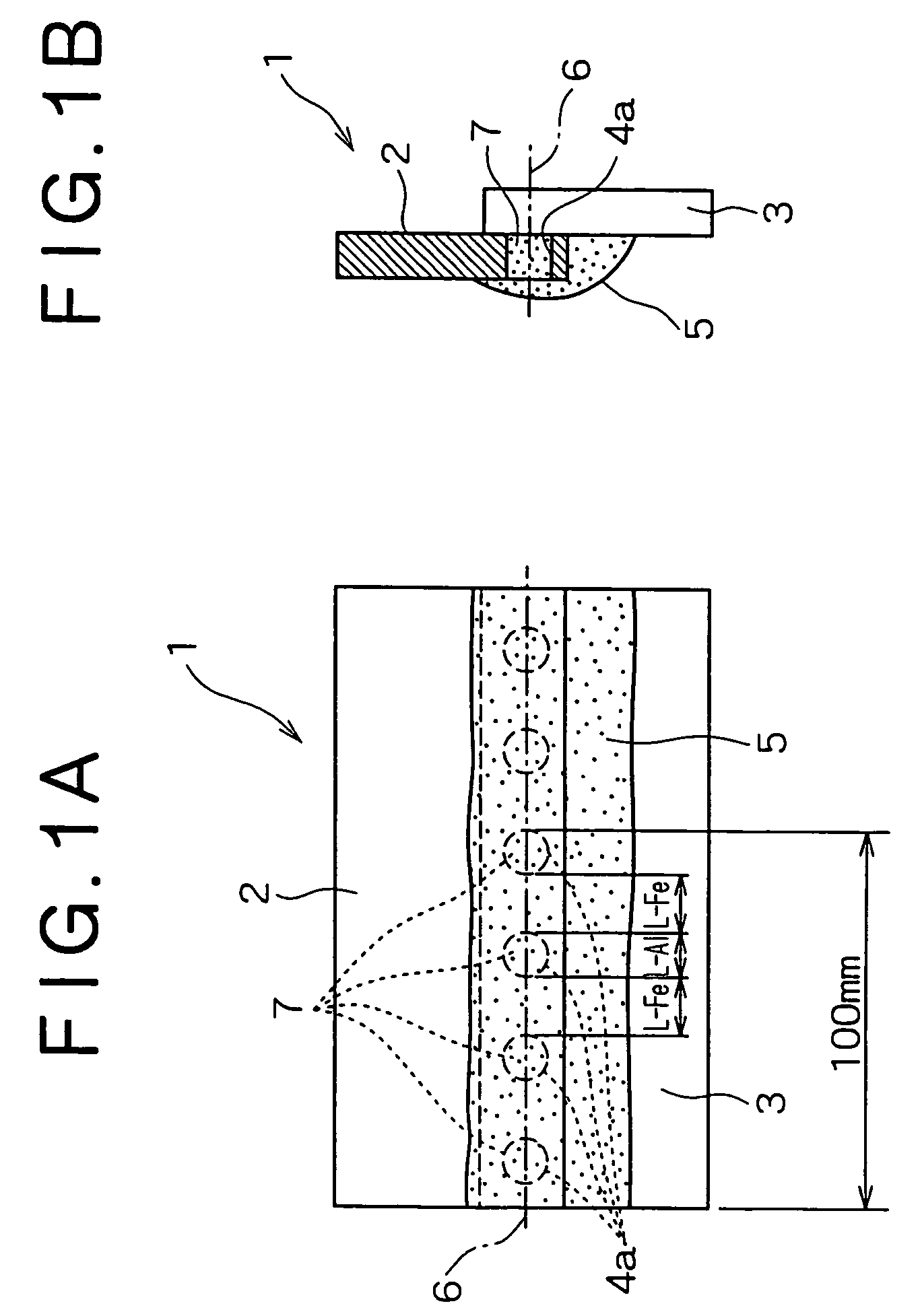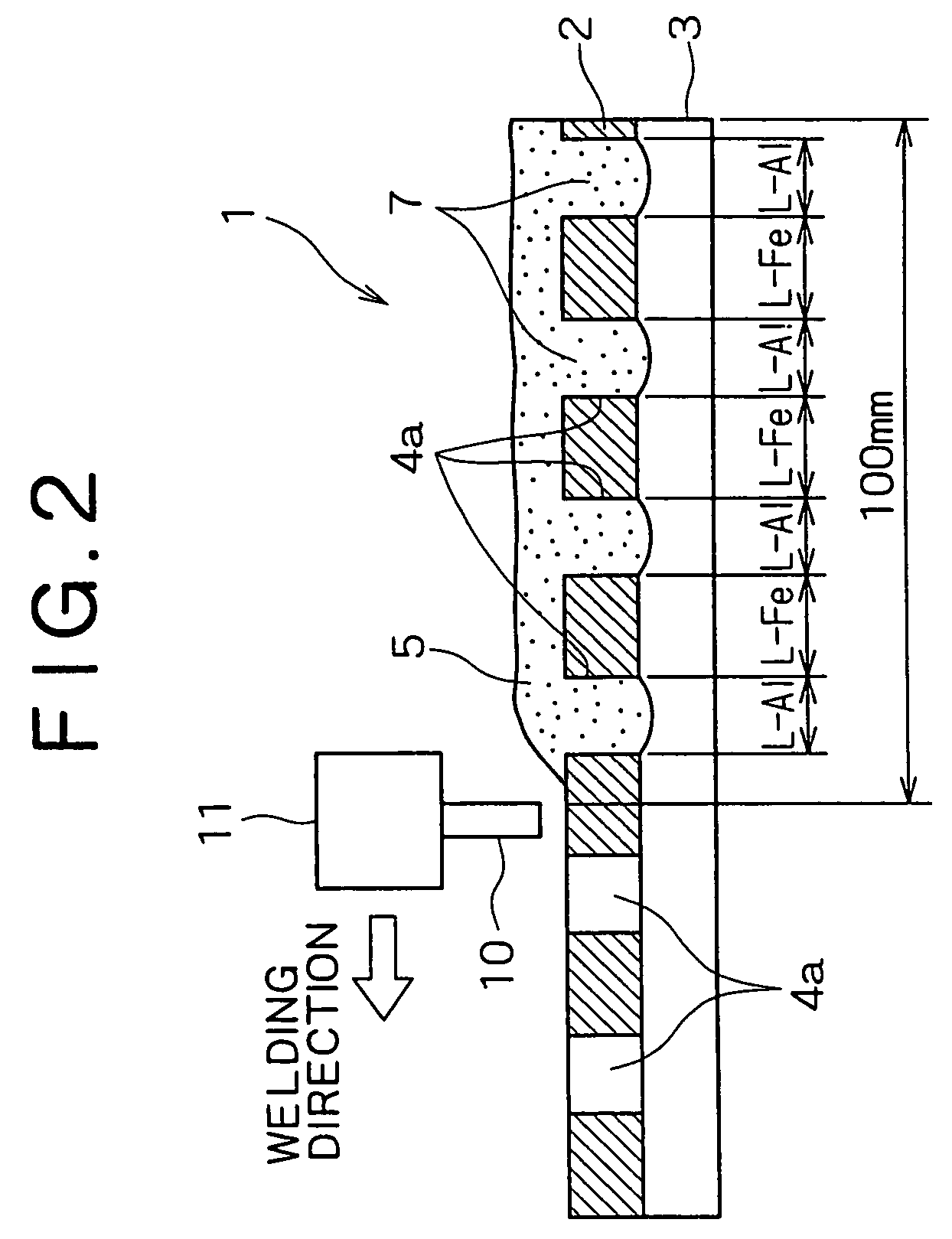Dissimilar material weld joint formed by joining iron type material and aluminum type material, and weld joining method
a technology of iron type material and aluminum type material, which is applied in the direction of manufacturing tools, welding apparatus, transportation and packaging, etc., can solve the problems of brittle intermetallic compounds inside the bead, the fatigue strength of the weld joint is reduced, and the bead surface cracks, etc., to prevent the cracking of the bead surface, high joint strength, and high joint strength
- Summary
- Abstract
- Description
- Claims
- Application Information
AI Technical Summary
Benefits of technology
Problems solved by technology
Method used
Image
Examples
example 1
[0078]The present inventors laid a steel sheet (extending from a mild steel sheet SPCE to a high tensile strength steel sheet of up to 980 MPa) in which voids (holes) were formed according to the present invention on an aluminum alloy sheet (A5182), subjected them to lap weld tests using various kinds of aluminum welding wires, thus produced a dissimilar material weld joint, and then evaluated it.
[0079]In Table 1, shown are the conditions (the grade and the thickness) of the steel sheets and the aluminum alloy sheets used in the present weld tests, the welding wire condition (the grade), the welding conditions (the electric current, the voltage and the welding speed), the void conditions (the shape and the parameter P value), the evaluation results (existence of bead cracking and the tensile strength and elongation of the joints), and others. Here, an AC power source was used for all the welding. Then, in order to facilitate the evaluation in the present weld tests, a round shape wa...
example 2
[0088]The present inventors produced weld joints by joining steel sheets (“GA” in the column “Type” meant a hot-dip galvanized steel sheet) and aluminum alloy sheets shown in Table 2 below under various heat input conditions through arc welding using an AC power source and various kinds of aluminum welding wires. In the steel sheets, round-shaped voids of the diameters (2R, R meant a circle-equivalent radius) shown in Table 2 were formed beforehand at the intervals (the lengths of the non-void portions) shown in Table 2. In the arc welding, an Ar gas (flow rate of 20 to 25 l. / min.) was used as the shielding gas. The angle of the welding torch was set at 80°. Here, the Mg contents in the aluminum welding wires used here were as follows; 0.05% or less for A4043-WY, 4.3 to 5.2% for A5183-WY, 4.5 to 5.5% for A5356-WY, and 2.4 to 3.2% for A5554-WY.
[0089]The produced weld joints were visually inspected to judge the existence of bead cracking and also the joint strength thereof was measure...
example 3
[0093]The present inventors produced weld joints by joining steel sheets (“GA” in the column “Type” meant a hot-dip galvanized steel sheet) and aluminum sheets shown in Table 4 below under various heat input conditions through arc welding using a DC power source and various kinds of aluminum welding wires. In the steel sheets, round-shaped voids of the diameters (2R, R meant a circle-equivalent radius) shown in Table 4 were formed beforehand at the intervals (the lengths of the non-void portions) shown in Table 4. In the arc welding, an Ar gas (flow rate of 20 to 25 l. / min.) was used as the shielding gas. The angle of the welding torch was set at 80°.
[0094]The produced weld joints were visually inspected to judge the existence of bead cracking and also the joint strength thereof was measured in the same manner as Example 2. The results are shown in Table 5.
[0095]As it is obvious from Tables 4 and 5, in the case of a DC power source, when the welding condition (heat input Q) satisfie...
PUM
| Property | Measurement | Unit |
|---|---|---|
| length | aaaaa | aaaaa |
| unit length | aaaaa | aaaaa |
| tensile strength | aaaaa | aaaaa |
Abstract
Description
Claims
Application Information
 Login to View More
Login to View More - R&D
- Intellectual Property
- Life Sciences
- Materials
- Tech Scout
- Unparalleled Data Quality
- Higher Quality Content
- 60% Fewer Hallucinations
Browse by: Latest US Patents, China's latest patents, Technical Efficacy Thesaurus, Application Domain, Technology Topic, Popular Technical Reports.
© 2025 PatSnap. All rights reserved.Legal|Privacy policy|Modern Slavery Act Transparency Statement|Sitemap|About US| Contact US: help@patsnap.com



